What is Ad Fatigue and how to avoid it?
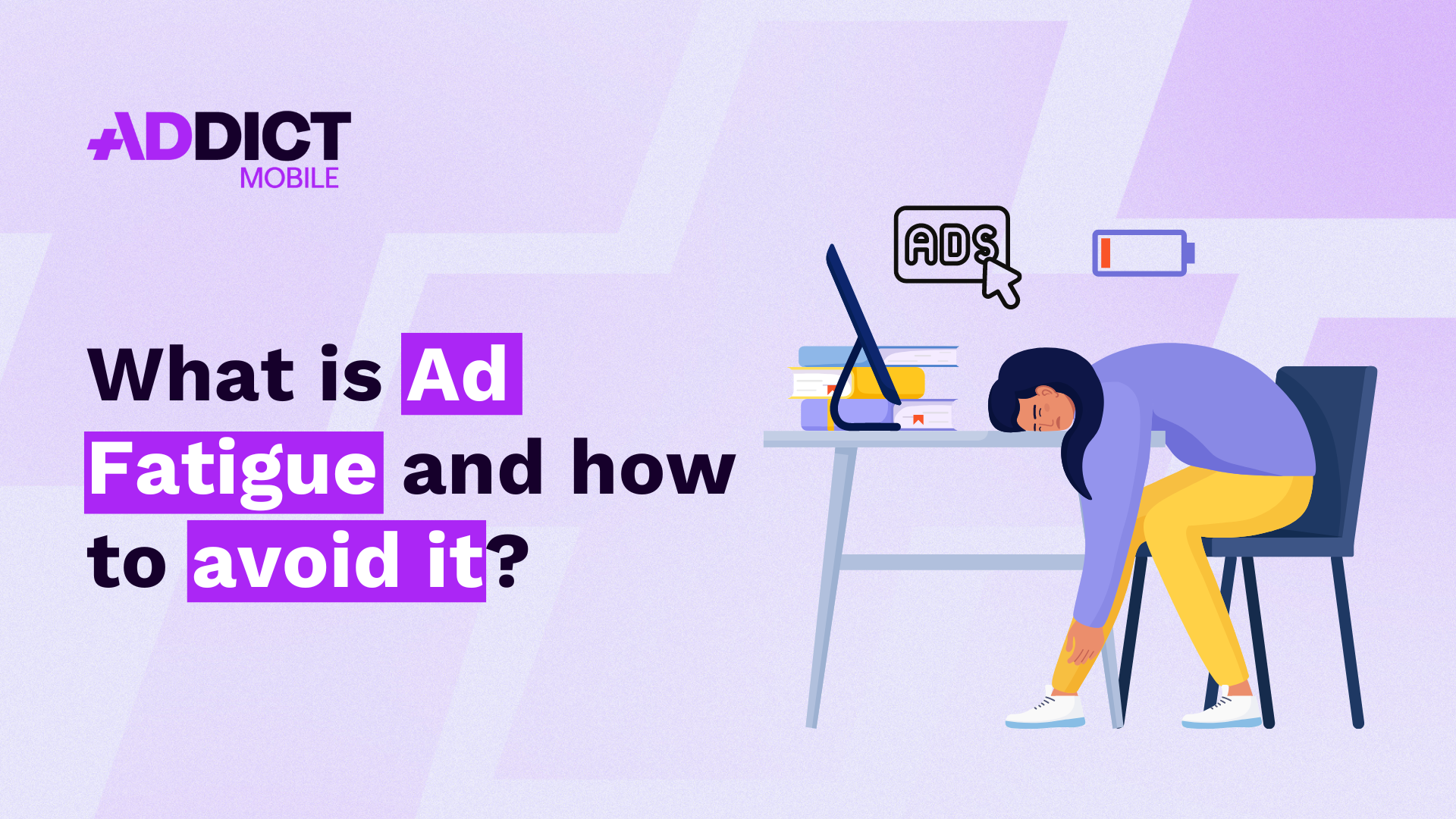
Creative Fatigue or Ad Fatigue is when the performance of an ad declines because users have seen it too often. This phenomenon has a direct impact on the performance of campaigns, so it is essential to avoid it.
What are the factors of Ad Fatigue?
The audience size is too small. If you broadcast your campaigns to a limited audience size, this audience will be exposed to your different ads faster.
The 2 parameters that are taken into account in the repetition of a creative are the budget and the size of the audience:
– If the budget is high but the audience is small > even more repetition.
– If the budget is low, the audience is large > very little repetition.
For campaigns that spend 100€ per day, the same creative will last longer. The higher the amount invested daily, the more you will have to constantly renew and test.
The number of creatives is limited. If you only have a few creatives in stock for your campaigns, you will more quickly cause weariness among your users.
Let’s take the example of two advertisers A and B, spending the same amount at the same pace and the same time (hence getting the same CPM therefore the same total amount of impressions), the only difference is one has 3 creatives live and the other has 6:

Each Advertiser’s A creative will reach Ad Fatigue two times faster than Advertiser’s B because each of its creatives will get twice the amount of impressions.
Low diversity in the creative concepts of the ads. If you continually exploit the same concept even when changing the creatives, you will increase the exhaustion of the creatives.
Ad Fatigue is a cycle
The following graph illustrates the life cycle of a creative from launch to Ad Fatigue:
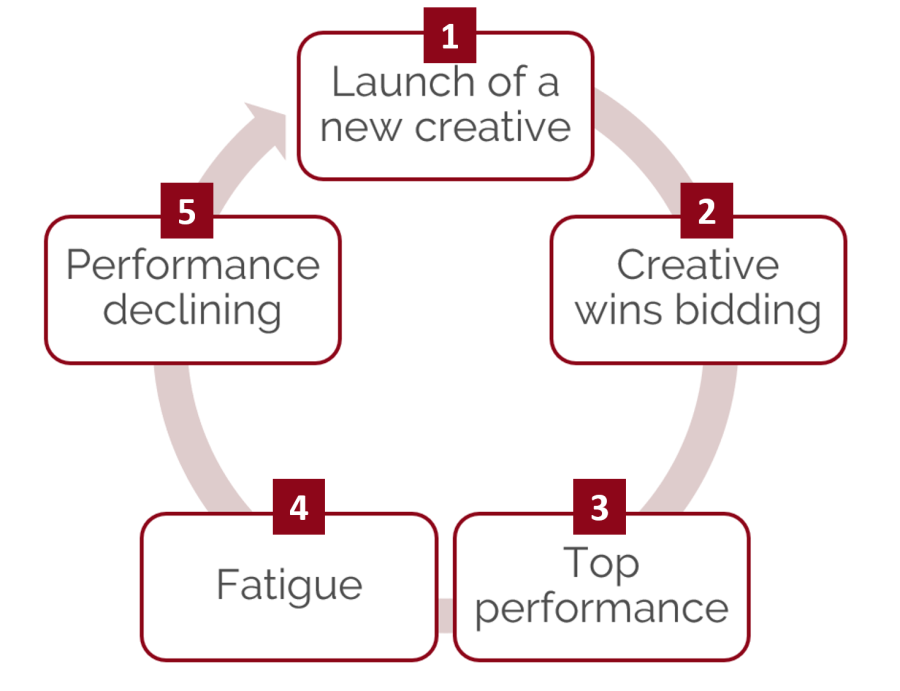
– The creative is added to the campaigns. The learning phase fires up, i.e. the algorithm diffuses it to have a significant amount of impressions and install. Then measures how the creative works (interactions, view, conversion).
– Once the creative has passed the algorithm’s test, it will then compete with the other ads on the auction system. This is when we can analyze if the installation rate and the in-app performance meet the set objectives and compare the performance with other top creatives. If the visual shows good results, we will increase the volumes to see if the performance can keep up with the increase in load. In case the results are not up to expectations we cut this design.
– If the results are maintained, the investment in the latter will be reinforced, the creative will generate more and more impressions and will be widely distributed.
– After this phase, creatives begin to generate Ad Fatigue. The CTR (click through rate) decreases which increases the CPI (cost per installation). There is a clear link between increased frequency and lower CTR.
– Users get bored, and interact less with the ad, so performance begins to decline. The main change will be seen in the installation conversion rate as the CPI will increase more than the in-app behavior. However, this doesn’t mean that the ad is bad, it can still be a high-performing creative, just less performing than before. If you find that creatives continue to generate in-app actions, then your CPA will be only slightly affected.
How to avoid Ad Fatigue?
Creative or Ad Fatigue is unavoidable and we must take it into account in campaign management.
To avoid being confronted with it, optimize the campaigns to limit their impact:
– Regularly test new audiences.
– Prioritize broad targeting. The larger the audience, the greater the reach, the lower the frequency and therefore a later Ad Fatigue.
– Refresh your creatives by constantly varying the concepts. It is very important to adapt the top concepts to get the most out of them while diversifying the ideas to find new top concepts for the long term.
The graph below shows the IPM per month since the launch of a visual on Snapchat, where we can clearly see the effect of renewing the creations.
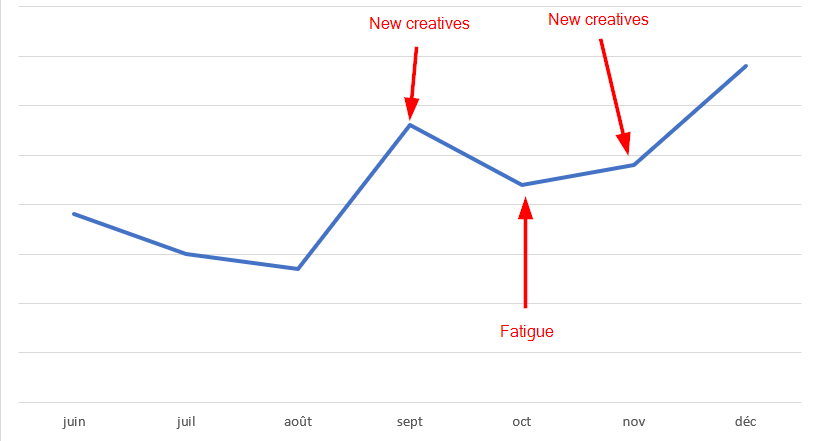
When adding new creatives, the positive impact on the installation rate is obvious. It is interesting to see that when creases are refreshed more often, the IPM remains at higher levels than during the testing phase of new designs.
Note that Facebook’s Business Manager allows you to check the frequency of your ads (average number of views of one creative per user). To be watched!
NEWS
Article in relation
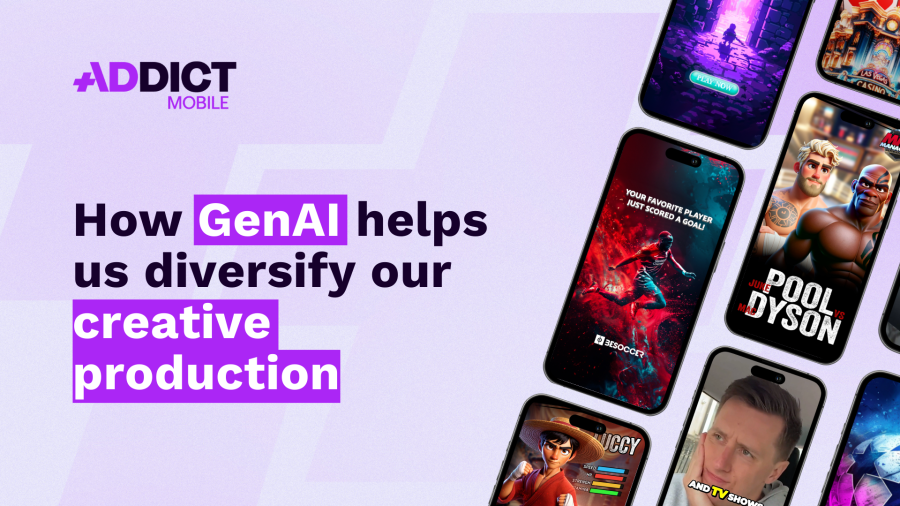
UA: How GenAI helps us diversify our creative…
-5% CPI, +23 points ROAS, GenAI creatives are increasingly becoming a performance driver for apps. When combined with a traditional approach, they allow...
Published on 8 July 2024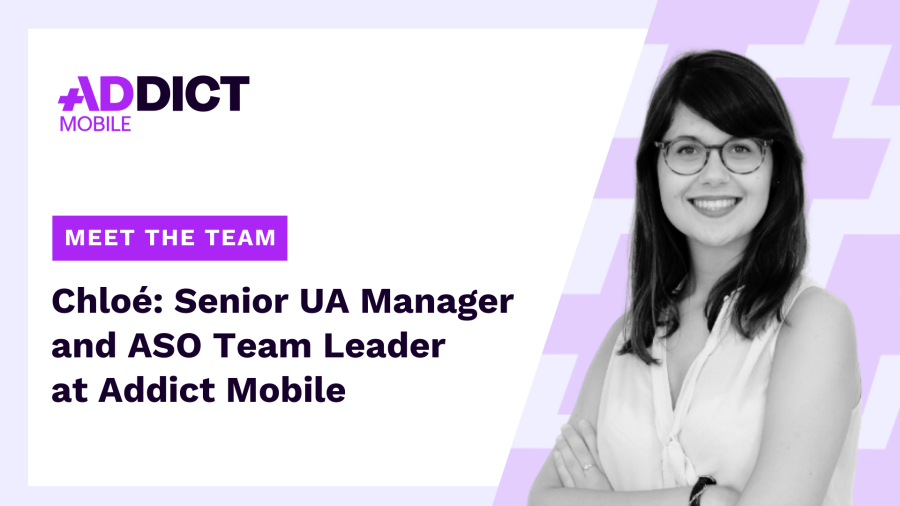
Interview with Chloé Morant, Senior UA Manager and…
Meet Chloé, Senior UA Manager and ASO Team Leader at Addict Mobile. She joined in 2021 as a UA Manager and is now...
Published on 11 June 2024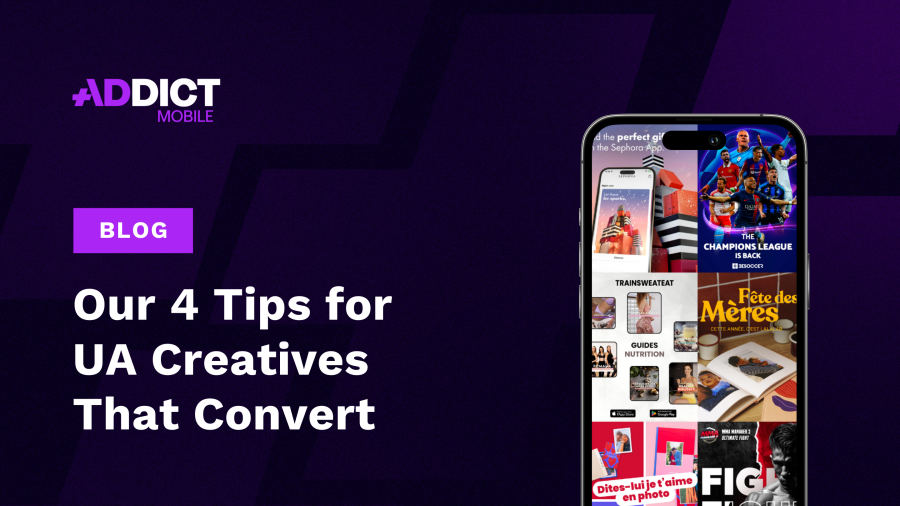
Our 4 Tips for UA Creatives That Convert
We cannot emphasize enough: creativity is crucial for the success of user acquisition campaigns. It’s an essential element that can greatly impact performance...
Published on 20 May 2024

